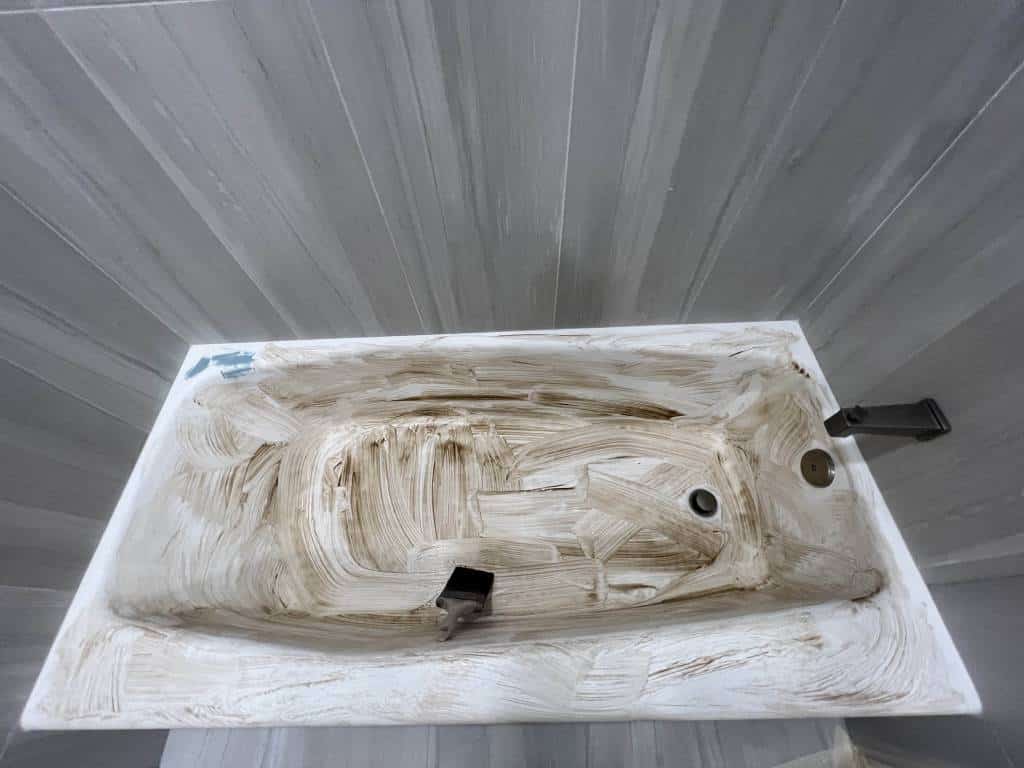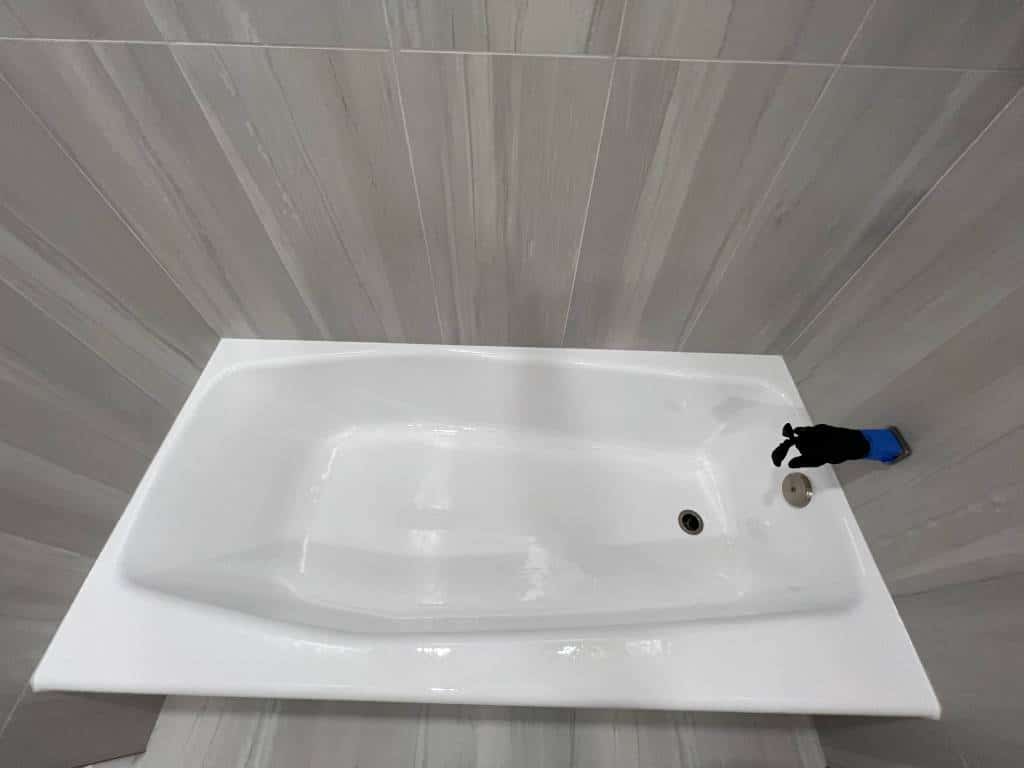The Essential Difference Between Refinishing and Reglazing
When it comes to rejuvenating worn-out surfaces in your home, such as countertops, sinks, bathtubs, showers, tile walls, and tile floors, there are two essential processes that work hand-in-hand: refinishing and reglazing. These processes are interdependent and collectively ensure a successful restoration of the surface, providing a long-lasting and aesthetically pleasing result. Let’s delve into the relationship between refinishing and reglazing, understanding why one cannot be done without the other.
Refinishing, also known as resurfacing or reconditioning, forms the initial step in the restoration process. It involves a series of preparatory procedures that set the stage for the subsequent reglazing process. The refinishing process begins by thoroughly cleaning and removing any soap scum, grime, and coatings from the surface. This ensures a clean canvas for the application of a new finish.


The next step in the refinishing process is the preparation of the surface for the adhesion of the reglazing material. This preparation involves acid etching or sanding down the surface, which removes the outermost layer or creates an even, rough texture. This process is vital as it allows the reglazing material to adhere effectively, ensuring a durable and long-lasting finish.
Furthermore, refinishing also addresses any imperfections or damages present on the surface. Scratches, cracks, chips, or dents are repaired and filled during this stage. These repairs are crucial for ensuring a smooth and flawless final result. Without addressing these issues, the reglazing process would only serve to highlight the imperfections, leading to an unsatisfactory outcome.
Additionally, refinishing includes the application of a bonding agent and primer. These components are fundamental in creating a strong bond between the surface and the subsequent coats of reglazing material. The bonding agent enhances adhesion, preventing peeling or delamination over time. The primer acts as a base layer, providing additional durability and protection.
Once the refinishing process is complete, the surface is then ready for the reglazing process. Reglazing involves applying a specialized glaze or enamel to the surface, creating a protective layer that enhances both appearance and functionality. This glossy and smooth topcoat provides resistance against stains, mold, mildew, and everyday wear and tear.
The reglazing process begins with the application of multiple layers of the glaze or enamel to the prepared surface. Each layer is carefully applied with precise techniques, ensuring an even and consistent finish. These layers build up to create a robust and durable coating that is highly resistant to scratches, chemical damage, and impact.
By combining the refinishing and reglazing processes, you achieve a comprehensive and effective restoration of surfaces in your home. The refinishing process ensures that the surface is properly prepped, repaired, and prepared for reglazing. Without the refinishing step, the reglazing material may not adhere properly to the surface, resulting in a compromised finish that may not withstand daily use.
It’s important to note that the relationship between refinishing and reglazing extends beyond the initial process. Reglazed surfaces also benefit from periodic refinishing maintenance, which involves light sanding and reapplication of a protective topcoat. This maintenance ensures the longevity of the reglazed surface, allowing it to maintain its fresh and vibrant appearance for years to come.
In conclusion, refinishing and reglazing are two interconnected processes necessary for rejuvenating worn-out surfaces in your home. Refinishing prepares the surface by removing contaminants, repairing damages, and creating an optimal texture for reglazing adhesion. Reglazing, in turn, applies a protective topcoat, enhancing appearance and durability. These processes combine to achieve a successful and long-lasting restoration. Whether it’s countertops, sinks, bathtubs, showers, or tile surfaces, understanding and appreciating the relationship between refinishing and reglazing is essential in transforming your home.





